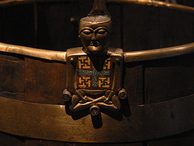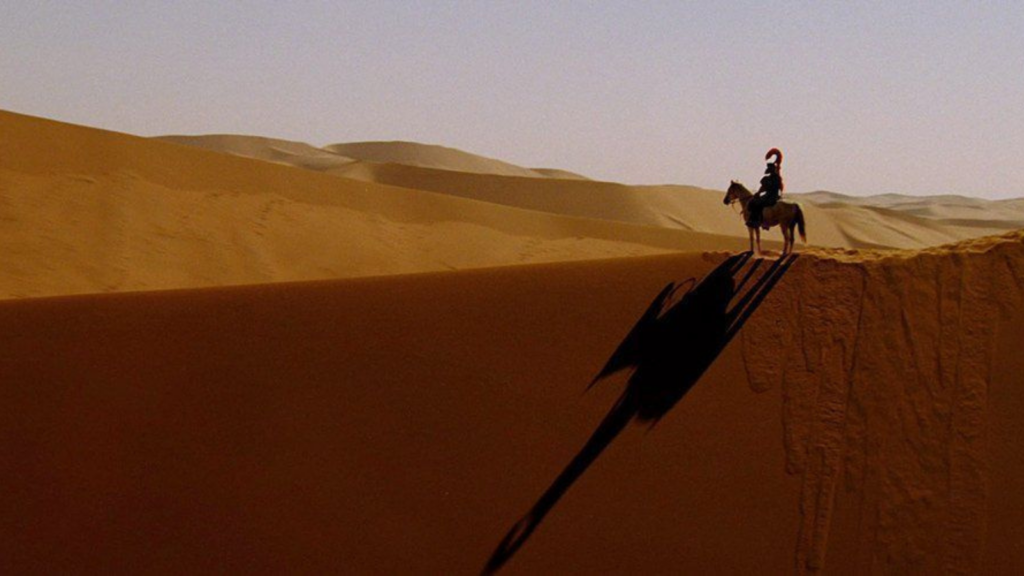Seriously odd and mysterious, unexplainable archeological mysteries keep turning up in all corners of the world these days. What exactly do we really know about our ancient past? Every day it appears that while we learn more, there are yet more mysteries just around the corner waiting to be unearthed or discovered under the depths of the sea.
First we make a stop briefly in the land of the Vikings, where a June 26 article from The Norway Post reports that in the Oestfeld city of Sharpsborg, three skeletons – two elderly adults and one child – buried over a thousand years ago, have been unearthed in a garden. The catch: One of the adults shows definite signs of being an Incan Indian, due to a genetic “flaw in the neck which is believed to be limited to the Incas in Peru, says archaeologist Mona Beate Buckholm.” This seems to illustrate fairly conclusively that the Vikings traveled much more extensively around the globe than ever previously suspected by mainstream science. If the Vikings made it to Newfoundland, what was to keep them from moving much further down the coast during their adventurous travels?
We then move from Norway to India, to where archeologists are studying two new finds of long-lost and thought by many to be nothing more than mythical cities.
A submerged city off the coast of India, ancient Dwarka, has had a piece of wood retrieved that should help archaeologists determine the exact age of the city that many insist is Lord Krishna’s own. “Now that we have found wood, we are confident of dating the excavations. We will know exactly how old is this submerged city,” Alok Tripathi, Superindenting (sic) Archaeologist of the Underwater Archaeology Wing of the Archaeological Survey of India was quoted in DNAIndia (June 3, 2007). Back in 1963, certain artifacts were recovered that appeared to put the age of this submerged city at at least 2000 years, but now that wooden artifacts have been pulled from the water, an exact age should be easier to determine. (A great photo of an underwater structure at Dwarka can be found here.)
In yet another incredible discovery, archaeologists in Kerala, India, have found what they suspect is the mysterious, 2000 year old lost port city of Muzires, according to a June 1, 2007 report by India’s NDTV.com, mentioned in ancient Roman reports but long thought lost to the sands of time.
India abounds with long-thought mythical, or at least, long-lost cities underwater. “Fresh-water sources have been historically conducive to human habitation. Many ancient port cities and towns were located at the mouth of rivers or estuaries, where ships could be anchored.,” says S P Gupta, former director of Allahabad Museum and current chairman of Indian Archaeological Society, in a June 15 question and answer session with The Times of India, titled “Ancient India was in the Middle of Global Trade.”
“Rao asserts that the remains excavated by his team from the mouth of the Gomti river in the Gulf of Kutch are part of Krishna’s Dwarka, on the basis of a seal found at the site,” continues S. P. Gupta. “At the Elephanta islands, 2,000-year-old Roman pottery has been discovered, indicating rich trade with the late Roman Empire between the 4th century AD and 7th century AD. The findings establish it as a significant port of the period. Further, on the west coast, at Chaul, a team from Deccan College has found evidence of trade with Oman from the 1st century AD to 13th century AD. Evidence of trade has also been traced right up to Japan from the west as well as the east of the country. We now know that India had contacts all over the ancient world, right from the Red Sea in the west to South China Sea in the east. India was right in the middle of global trade.”
Then we take a quick sprint to Israel, where for years the native, land-based peoples looked out over the seas and saw nothing but water and waves, never imagining what fantastic discoveries lay in wait just under the surface.
Caesarea’s newly opened Underwater Archeology Park is truly wondrous find for underwater archaeologists. “I tell you, there is nothing like this in the world. Do you realize,” Todd Pitock quotes his dive partner and guide Avi Baz in Forbes.com (June 18, 2007) “that after the fall of the Roman Empire, the technological know-how [that built this port] disappeared for more than 14 centuries?” Built between the years of 22BC and 10BC, a measly ten years, Herod managed to have constructed the world’s first “major” artificial port.
“For me,” writes Pitock, “Israel, a strip of land with a knack for making news, has always been an interesting, vibrant place, a highly evolved culture of outdoor cafés with 6.4 million prime ministers who don’t so much ask what you think as tell you. It never before occurred to me, though, how interesting the country’s waters could be. Caesarea is but one highlight of a coast that’s lined with ruins and remains. An 8,500-year-old Neolithic village near Haifa, for example, was found with a well, graves, houses and a prayer site. Other sights include Phoenician and Greco-Roman ports, and a multitude of shipwrecks, with partial vessels and contents encased, and preserved, by the sandy seafloor abutting the coast. (Most dive sites are accessible with local dive clubs. The Israel Antiquities Authority has established another underwater park near Haifa, though at the time of this writing its official opening was still held up over issues related to liability insurance.)”
“In a concentrated stretch of coast, we have the entire history of man’s involvement with the sea,” says Sarah Arenson, a retired professor of maritime history at Haifa University who was instrumental in getting Caesarea’s marine park completed.
As Pitock reports, “In The Jewish War, the first-century historian Flavius Josephus described the unprecedented engineering feat. ‘[Herod] first marked out the area for a harbor,’ he wrote, ‘then lowered into 20 fathoms of water blocks of stone mostly 50 feet long, 9 deep and 10 broad….When the foundation had risen to water-level he built above the surface a mole 200 feet wide; half this width was built out to break the force of the waves and so was called the Breakwater; the rest supported the encircling stone wall. Along this were spaced massive towers….’ Engineers devised a system to flush garbage and flotsam. Between marvelous towers, an arcade of storerooms received cargo vessels and nobles took their evening constitutionals. ‘[I]ts beauty,’ Josephus wrote, ‘gave no hint of the obstacles encountered.'”
These are just a few of the latest discoveries that have been covered by gradually, and sometimes rapidly rising seas and waters around the world. There are bound to be countless left to discover, now that “professional” scientists are actually taking the time to look for these sites and cities, rather than simply denigrating those independent researchers and amateur archaeologists who’ve been insisting for years that looking under the seas, oceans and lakes around the world is not only worthwhile but potentially quite lucrative both culturally and economically for those countries in whose waters such finds are discovered and opened for exploration and research.
Photo by amateur_photo_bore and used under a Creative Commons license.













